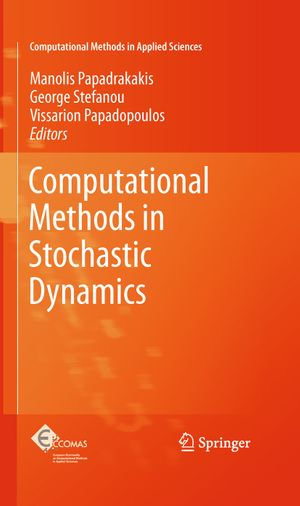
eTEXT
Computational Methods in Stochastic Dynamics
By: Manolis Papadrakakis (Editor), George Stefanou (Editor), Vissarion Papadopoulos (Editor)
eText | 1 February 2011
At a Glance
eText
$219.00
or
Instant online reading in your Booktopia eTextbook Library *
Read online on
Desktop
Tablet
Mobile
Not downloadable to your eReader or an app
Why choose an eTextbook?
Instant Access *
Purchase and read your book immediately
Read Aloud
Listen and follow along as Bookshelf reads to you
Study Tools
Built-in study tools like highlights and more
* eTextbooks are not downloadable to your eReader or an app and can be accessed via web browsers only. You must be connected to the internet and have no technical issues with your device or browser that could prevent the eTextbook from operating.
ISBN: 9789048199877
ISBN-10: 9048199875
Series: Computational Methods in Applied Sciences : Book 22
Published: 1st February 2011
Format: PDF
Language: English
Publisher: Springer Nature
Volume Number: 22
You Can Find This eBook In
This product is categorised by
- Non-FictionMathematicsApplied Mathematics
- Non-FictionEngineering & TechnologyTechnology in GeneralEngineering in General
- Non-FictionEngineering & TechnologyMechanical Engineering & MaterialsMechanical Engineering
- Non-FictionComputing & I.T.Computer ScienceArtificial Intelligence
- Non-FictionEngineering & TechnologyMechanical Engineering & MaterialsMaterials ScienceMechanics of SolidsDynamics & Vibration
- Non-FictionScienceScience in GeneralMaths for Scientists
- Non-FictionSciencePhysicsClassical Mathematics
- Non-FictionMathematicsCalculus & Mathematical AnalysisNumerical Analysis
- Non-FictionComputing & I.T.Computer Science






















